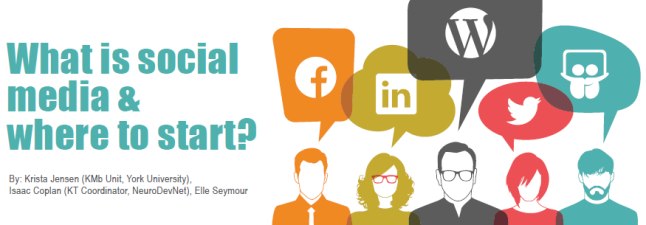by Anneliese Poetz, KT Manager, NeuroDevNet
 This week, a new $400 million research vessel made national headlines after asking for public input to name it. The runaway #1 name was “Boaty McBoatface” and was far from the more serious meaningful suggestions the Natural Environment Research Council (NERC) had hoped for. The news reported that the NERC still has the right to decide what to name it – as a KT professional, I am hoping they keep Boaty McBoatface if not for any other reason but to maximize the potential for their KT. [update: as of April 18, 2016 the science minister, Jo Johnson reports te government wants a name that ‘fits the mission’]
This week, a new $400 million research vessel made national headlines after asking for public input to name it. The runaway #1 name was “Boaty McBoatface” and was far from the more serious meaningful suggestions the Natural Environment Research Council (NERC) had hoped for. The news reported that the NERC still has the right to decide what to name it – as a KT professional, I am hoping they keep Boaty McBoatface if not for any other reason but to maximize the potential for their KT. [update: as of April 18, 2016 the science minister, Jo Johnson reports te government wants a name that ‘fits the mission’]
I understand the argument not to keep the name: researchers are concerned that their rigorous and important work may not be viewed as credible if the vessel it is carried out with is donned with a name that started out as a joke. I believe this is a valid concern, however, I would like to offer a different perspective. As a KT professional, I am aware that KT-conscious researchers, as individuals and, as part of research networks and organizations, are constantly seeking for a way to raise awareness about their work, to create “sticky messages” that audiences will remember. Indeed, the effectiveness of any KT strategy begins with the ability to raise awareness about the project, the findings, the usefulness and potential application of the work. While awareness does not guarantee uptake and implementation, if people don’t know about the research, they can’t even consider using it.
Awareness-raising for research projects typically aims to direct attention toward the evidence through dissemination activities such as: conferences, websites, social media. An integrated knowledge translation approach is based on relationship-building to both inform the research in progress as well as act as a spokesperson to spread the research findings (and hopefully facilitate their uptake and implementation of evidence-informed recommendations into practice and policy). Researchers, research networks, and organizations promoting evidence-informed decision-making sometimes seek spokespersons who are more broadly recognizable, to be ‘champions’ such as well-known celebrities or athletes. The reality is, it is very difficult to achieve the desired level of awareness or ‘reach’ of research findings that could maximize uptake and implementation. Capitalizing on the popularity of “Boaty McBoatface” can be an effective means to direct attention to the researchers’ social media channels, websites, for achieving broader awareness of the research evidence.
 Organizations have recognized the power of social media and try to create content that will be shared, and go ‘viral’, with the end result being uptake and implementation of their messages. There is a fine line between ‘gimmicky-ness’ that could reduce credibility and cause people to ignore
Organizations have recognized the power of social media and try to create content that will be shared, and go ‘viral’, with the end result being uptake and implementation of their messages. There is a fine line between ‘gimmicky-ness’ that could reduce credibility and cause people to ignore  it, and something that can go viral while causing effective uptake of evidence-based messages. The European Centre for Disease Control (ECDC) created a hedgehog mascot to help convey messages about public health. The United States Centre for Disease Control (CDC) launched a “Zombie Apocalypse” twitter campaign that ended up being so successful it crashed their website from visitors who wanted the information on emergency preparedness.
it, and something that can go viral while causing effective uptake of evidence-based messages. The European Centre for Disease Control (ECDC) created a hedgehog mascot to help convey messages about public health. The United States Centre for Disease Control (CDC) launched a “Zombie Apocalypse” twitter campaign that ended up being so successful it crashed their website from visitors who wanted the information on emergency preparedness.
The NERC’s “name our ship” website crashed this past weekend due to the amount of traffic. I can only think of this kind of public attention as something positive (for their KT), in fact, it is a rare and unexpected gift to the ocean researchers at its helm.



 One thing that I should also mention is the power of
One thing that I should also mention is the power of 












